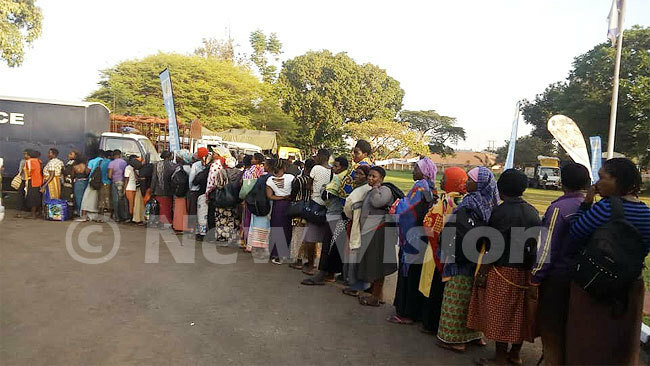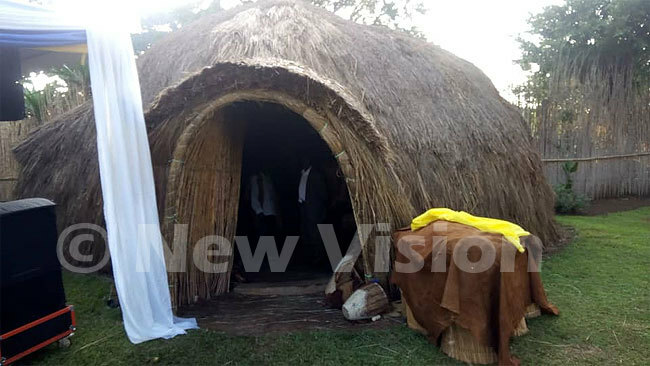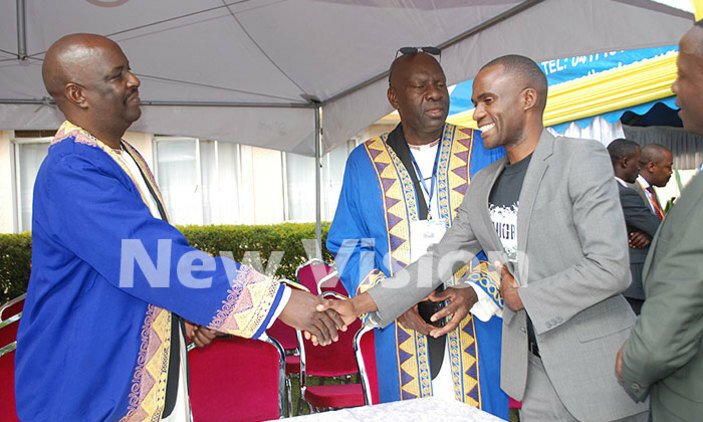Omukama Iguru marks silver jubilee
It (empango) is important because it remains one pillar of Banyoro cultural identity. There is usually fanfare, with various troupes performing traditional dances and songs to entertain the Omukama.
EMPANGO BUNYORO IGURU
All roads will today lead to Karuziika Palace in Hoima town for the commemoration of the 25th coronation anniversary of Omukama Solomon Gafabusa Iguru of Bunyoro-Kitara Kingdom. Locally known as Empango, the day is marked on June 11, every year.
It is marked to celebrate the day the Omukama ascended to the throne. Iguru was enthroned on June 11, 1994, following the restoration of kingdoms by the NRM Government, after they had been abolished by the Obote I government in 1969.
Andrew Kirungi Byakutaga, the kingdom's Omuhikirwa (prime minister), said the Omukama will give the state of the kingdom address to show how Bunyoro has transformed over the years and the challenges ahead. He said the kingdom prepared a sh684m budget for the celebrations.

People lining up to attend the celebrations
The Omukama is expected to serve his people a sumptuous feast, locally known as okwinura. On June 10, prayers were held at St Peter's Cathedral in Duhaga cell, Hoima municipality, to thank God for the life of the Omukama and for enabling him to spend another year on the throne (okujuumura engoma).
Byakutaga said the day was preceded by other activities, including the inter-clan football, netball, draughts and omweso (traditional board game) tournaments and a marathon. He invited residents to the fete, which he said was expected to host 20,000 people.
He thanked the various companies that have made cash contributions towards the celebrations.

Empango is the first ritual the king performs as he is being enthroned. The event is marked every year, from the day the Omukama ascends the throne. President Yoweri Museveni is expected to be the chief guest.
Karuziika Palace in Hoima town was a beehive of activity, last week. The cultural shrines were given a new face with fresh reeds, while the main buildings got a paint job.
All this was in preparation for the 25th empango (coronation) anniversary of the Omukama of Bunyoro Kitara, Solomon Gafabusa lguru.
The Omukama also flagged off the empango marathon in Hoima town on June 8, where 9,000 runners took part. The proceeds from the marathon will be used to buy a blood analyser machine for Kiryandongo Hospital. The machine cost sh22m.

Omuhikirwa Andrew Kirungi Byakutaga receiving people
lguru traversed the districts of Masindi, Kiryandongo, Buliisa, Kibaale, Kakumiro, Kagadi and Kikuube, which constitute the kingdom in the weeks leading to empango.
What happens at empango
Jacquiline Kyomuhendo, a radio personality in Hoima, said the empango is a moment when people step away from modernity to there roots. They are treated to different cultural customs, such as dances and poetry recitals.
It is also a time when the Banyoro wear cultural attire of there heritage. She says it is a time the young get acquainted with there culture. Samuel Tumusiime, a special assistant in the Prime Minister's Office in charge of youth affairs said: "When we commemorate empango, we remind ourselves about the importance of our cultural institution in the contemporary world.
It (empango) is important because it remains one pillar of our cultural identity."
There is usually fanfare, with various troupes performing traditional dances and songs to entertain the Omukama.

Timeline of events Empango is the first ritual the Omukama performs as he is being crowned. lguru first performed this ritual on June 11, 1994, when he ascended the throne and since then, it has been an annual event marked the same day.
The empango ceremony is preceded by the presentation of the ebikwato (regalia) to the Omukama. This ritual is performed by the men in charge of the regalia (Ab'ebikwato) on the night of June 9. The function of presenting the regalia to the king is known as okweeza (cleansing) and the regalia is called amahango. It is also known as the regalia cleansing ceremony.
The officials in charge of the regalia present the amahango during the okweeza ceremony in the night to prove to the Omukama that they are ready for empango. The amahango involves reshaping of spears and drums called entimbo and other items.
On June 10, the palace officials headed to the Omukama Chwa II Kabalega's Royal burial grounds ( Gasam) at Mparo, which is 3kms away from Hoima town on the Hoima-Masindi road for a cleansing ceremony.
This is when the empango officially begins.
The ebikwato team hand-over the regalia to the king at 12:00am and after receiving the regalia, the king goes to the kraal to receive a bull from omupanyarwa (the man from the ruling Ababiito clan, who enthroned him).
This is a token of appreciation for leading the kingdom. Between 3:00am and 4:00am, the bull is slaughtered and the king serves the people. In the morning, the Omukama goes to his bathroom (ekyambukya) for a shower, before he is served breakfast.
Thereafter, wearing the regalia, the king and the Omugo (queen) take there seats in front of the palace residence to preside over the empango ceremony. It is during empango that the king gives his annual address to the subjects.
Speeches and other ceremonies have to be completed before 3:00pm, when the members of the Abasiita Clan, who keep the empango drum, bring it to the king. They hand over the drum to the Biito dynasty rulers, who inherited the empire.
Before 3:00pm, the Omukama and the Omugo change into barkcloth attire before he (king) sits on Nyamyaro (a nine-legged throne) to wait for the empango to be brought to him.
The members of the Abasiita clan take the empango drum to a hill in front of the palace, where they perform rituals seeking clearance from the spirits to proceed with the function.
After receiving permission, they go to the entrance of the palace, playing amakondere and other musical instruments to inform the king's Kabonera and Omupanyarwa if the ceremony has been cleared to go ahead or not.
The king is informed that it is okay to go ahead and the empango drum is ready. The Abasiita are then allowed to enter the palace to handover the drum to the Omukama who by then is seated on the Nyamyaro. The throne is said to have lasted close to two centuries so far.
The Omukama strikes the drum nine times, signaling the beginning of the empango dance ( Okuguruka empango), which lasts for two days in the palace. The empango dances involves playing the amakondere and other traditional music instruments.
Bunyoro kingdom prime minister Andrew Kirungi Byakutaga says the subjects are then served a sumptuous feast, known as Okwinura. The empango dance than is taken to the Omukondo who is said to have initiated its celebrations in Bunyoro in the 19th century during the reign of Omukama Rukidi I.
Also because Omukama Rukidi used to enjoy empango dancer, he asked Omukonda to request for anything he wanted in return. The Omukonda asked the king to allow the empango dance to take place at his palace after the main ceremony.
From the Omukonda, the empango goes to the omugo (Queen mother), the late mother of the current king in Bucuunga in Mparo division in Hoima municipality, where more rituals are performed to crown the year's festivities.
The celebrations lasted nine days in the king's palace in the past as people danced and feasted. The occasion is also for celebrating the year's harvest and giving part of it to the Omukama.